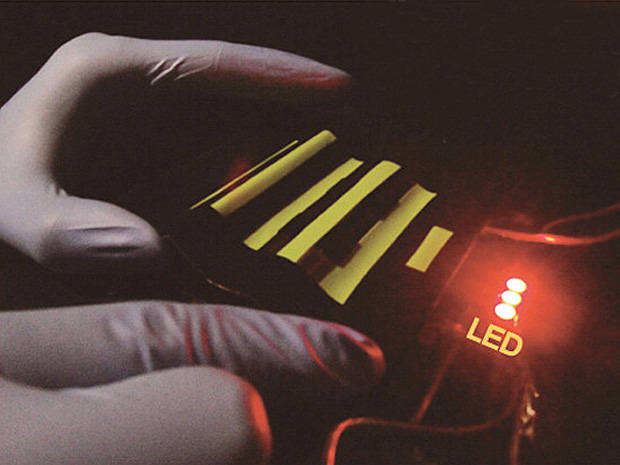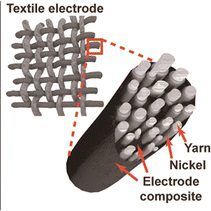
Wearable electronics have greatly impacted health and sports monitoring. Consumer products such as Google glass and smart-watches are also eliminating the need to carry separate devices. However, the rechargeable batteries which power these flexible electronic devices present a bottleneck to the progress of wearable technology.
Researchers at the Korean Advanced Institute of Science and Technology have been investigating power sources for these flexible devices. The research involved tests on various materials which were “modified to be functional during unusual mechanical motions by finding new materials and harmony between them.” The developed battery was woven into a fabric comprising nickel-coated polyester yarn (the collector), polyurethane which bound the holding materials together and polyurethane which served as the separator.
“In development of wearable rechargeable batteries, the component requiring the most significant alteration from the conventional cell configuration is the current collector because the current collector largely dictates the mechanical properties of the entire cell. Along this direction, one of the most natural approaches would be to use textiles as current collectors after integration with conductive materials.” – KAIST’s report on the Wearable Textile Battery.
The textile battery was able to survive 100 folding-unfolding cycles compared to Al foil which was broken after only 3 such cycles. Stress on the textile battery was efficiently handled by the 3D woven yarn making it viable for use on wearable electronic devices.
Methods for the fabrication of this battery already exist in cell-assembly therefore the procedure is readily scale-able for large-scale manufacturing.
A series of flexible polymer solar cells is integrated into the textile battery eliminating the need for connecting the battery to a power outlet for recharging. Power conversion efficiency (PCE) of the solar cells (0.5 cm2) on polyethylene naphthalate (PEN) substrates was 5.49%, compared glass substrate.
“The present investigation demonstrates that the materials and fabrication processes can be systemically united to realize a wearable textile battery with exceptional mechanical stability particularly in the forms of clothes and watchstraps. It is also expected that further tuning of the cell dimensions will find various future applications beyond what can be conceptualized now, especially with the aid of solar-charging capabilities.” – says the report.























